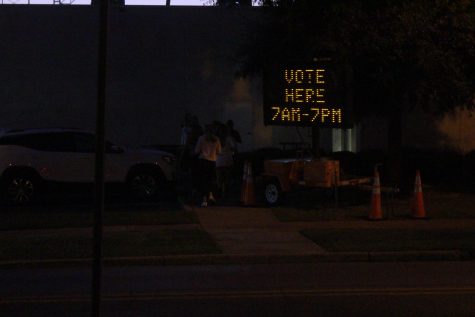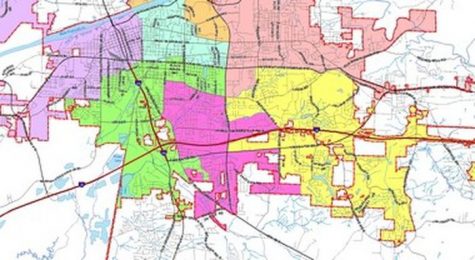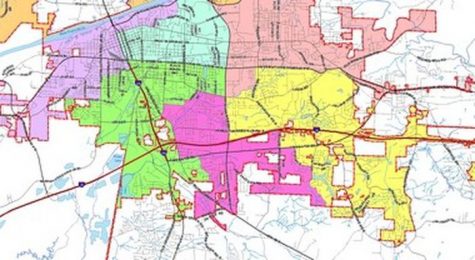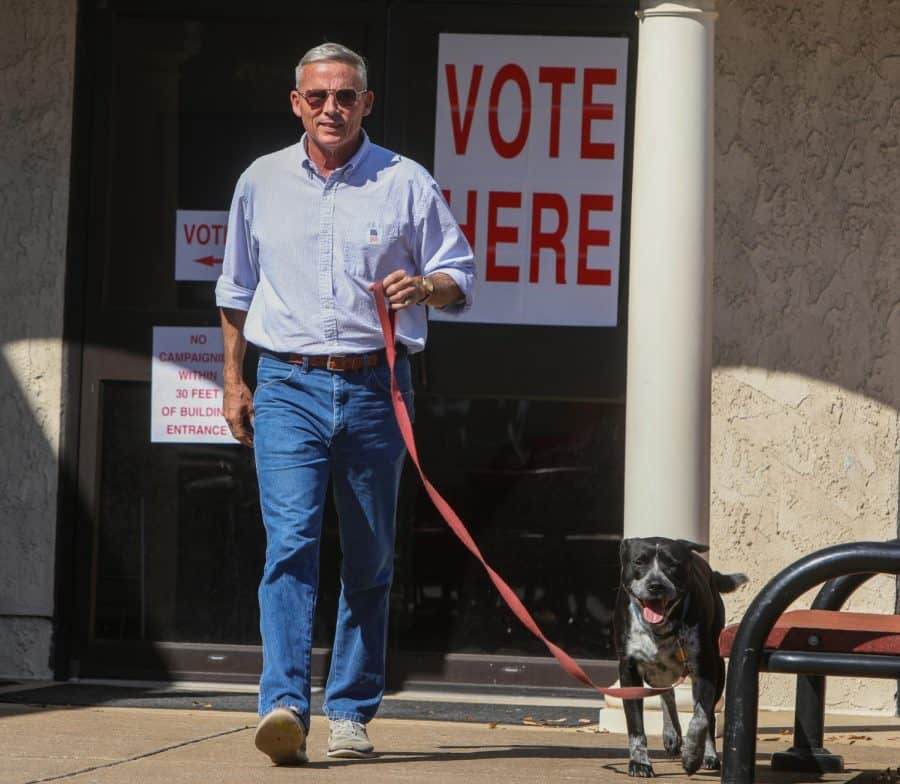Poll watchers allege Machine influence in special election
October 14, 2019
When flocks of sorority women charged the polls ten minutes before they closed Tuesday night, things felt all too familiar for poll workers at the Calvary Baptist Church.
The 2013 Tuscaloosa school board election saw the same influence by students with Greek affiliations. In that instance, students were attempting to register multiple people to one in-district address so that they would be able to vote for Cason Kirby, former UA Student Government Association president and the Machine-backed candidate who beat out Kelly Horwitz, the independent.
Marianne Rosenzweig, District 4 councilman-elect Lee Busby’s official poll watcher, picked up on these similarities. She provided a timeline of her observations, charting the amount of voters who came in as the day progressed. Her findings reveal that those numbers started to build up on the back end of the 12-hour period where the polls were open.
“I started taking some notes, and I noticed at 5:42 [p.m.] a fairly young guy came in,” Rosenzweig said. “He wanted to know what the vote count total was. They referred him to the [voting] machines [where the running total number of votes was displayed]. He made some kind of a face or grunting noises indicating that he was not pleased, and he walked out. I knew what that meant, and the [other poll worker] I was talking to said, ‘Well, we can expect an onrush of sorority women now.’”
“Then there was still significant numbers of women [after 6:30],” Rosenzweig said. “Five girls arrived at 6:53, 6:55, 6:56, there was six more that still walked in. After that, there was a group of about 10 – well, there were actually three tables at one point [filled with girls filling out provisional ballots]. I kind of lost count. There was somewhere between 10 and 20 at any given moment.”

This was unlike the previous hours of the day, where poll workers reported that there was never once more than three people at a given time, and they were usually spouses.
“After they had closed the doors, one girl was standing up while the last girl was sitting down doing something on her ballot,” Rosenzweig said. “One girl asked, ‘What did you put down for your local address?’ and the girl standing up had to read something that she had written down on her own ballot. She couldn’t even say it out loud from memory because she didn’t know it. She had to read it, and she said the address, and the other girl said, ‘What?’ She had to read it a second time to have her write it down. To me, that suggests that neither of them had a local address in this district but that they were trying to come up with one that was in this district.”
Identified by their T-shirts and car stickers, an overwhelming majority of these sorority girls belonged to Kappa Delta.
“I voted for Frank Fleming,” said Mary Steward Drummon, a Kappa Delta. “He seems to relate to the college students here in town and he understands where we’re coming from. He wants to give us a voice.”
Drummond heard about the Fleming candidacy for the first time when he came to talk to the Kappa Delta girls during chapter. This is a common practice of candidates for other on-campus elections as well, such as SGA President or Homecoming Queen.
“I think he went to a lot of Greek organizations,” Drummond said.
When asked what specific policy point of Fleming’s led him to earn her vote, Drummond once again referred to his relatability.
“I don’t really remember [anything specific], I just remember him seeming like he really wanted to give us a voice and really understands us,” Drummond said.
Other students, who arrived just minutes before the polls closed, cheered each other on as they rushed across the street to vote, and a few of the students had trouble remembering the name of the candidate they voted for or a specific policy of his or hers that appealed to them as voters.
Sarah Kimball Stephenson, a poll clerk that day, was able to speak to the entire day’s events. As a poll clerk, Stephenson was tasked with signing people in, checking IDs and making sure ballots were complete. Stephenson is currently a graduate student studying community journalism.
When first interviewed around 3 p.m., Stephenson recounted the crowds she had seen so far.
“Honestly, it’s been fairly split between students and older members of the community,” Stephenson said. “There was a bus from Capstone Village Retirement Home that brought a bunch of people over. At 3, more students started to come right from their classes and stuff. So we probably are expecting more working-age people to come in around 5. This morning it was mostly those who are retired.”
While trying to check in some students, Stephenson noticed that some names were absent from the list.
“A lot of the younger people who have come in to vote so far were wearing merch for Frank Fleming,” Stephenson said. “There was a couple girls who came from the same sorority, and they had trouble with their registration. A couple of their names weren’t on the list, but they said that Frank had come to their chapter and got everyone to register there, but it obviously didn’t work for everyone.”
“The girls not on the registration list did not want to do the provisional ballots at first,” Rosenzweig said. “They didn’t care, they just wanted a sticker. They ended up staying and doing the provisional ballots anyways, and I don’t know why they made that decision.”
Many of the students who filled out provisional ballots posed with their “I Voted” sticker immediately outside of the poll station.
Stephenson chatted with other poll workers who had done this before, and collectively they estimated a turnout of about 200 voters. But Frank Fleming expected much more. When asked at about 3 p.m., he guessed that around 800 people were going to the polls, a significantly higher number than any seasoned poll watcher predicted.
When asked about how that number compared to voter turnout in the past for City Council elections, Stephenson said that there was one year in particular where it had spiked significantly.
“In the 2013 election of Matt Calderone, he got a lot of students to come out,” she said. “I think we were at about 11% for voter turnout, opposed to the three percent we usually see. But the second time he ran, he was unopposed, and it was back to three percent again. It’s weird, a little bit, to see such a low turnout for a new person [this year] when there are three candidates in the race.”
Stephenson then talked about the expectation for more provisional ballots following the 2013 gerrymandering that took place. This district change cut significant residential buildings out of District 4 and placed them in District 1.

Courtesy of City of Tuscaloosa

“Most people so far who have come in and thought they were on the list but weren’t, it was because they relined the districts,” Stephenson said. “It’s interesting, and obviously it’s a district election so gerrymandering can happen along demographic lines, but we’ve seen maybe three African American people come in for this election.”
Many students may have had a hard time voting in this election because of recent changes to the way student voter registration works. Under the new rules, it is much harder for students to be registered both in their hometown and in Tuscaloosa’s elections.
“You gotta pick one [place to be registered],” Stephenson said. “There has to be clarity and consistency when it comes to where you’re registered.”
Editor’s Note: In an earlier draft of this article, a source mistakenly identified a person whose name has since been removed from this story. The Crimson White sincerely regrets the factual error that ran in the first published draft of this story and in print, and will work diligently to do a better job of confirming facts with sources in the future.








